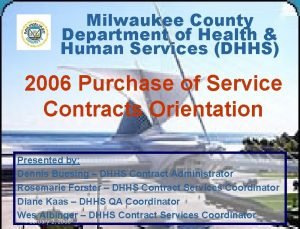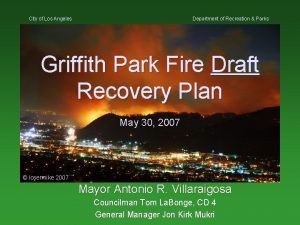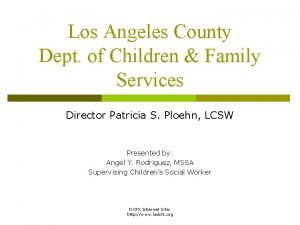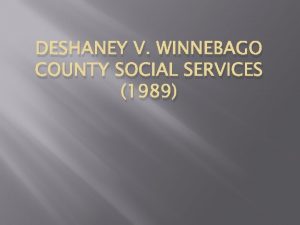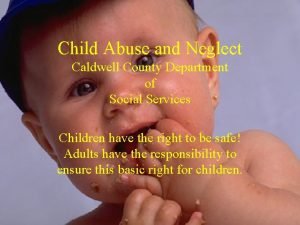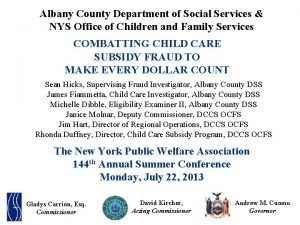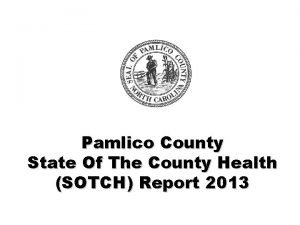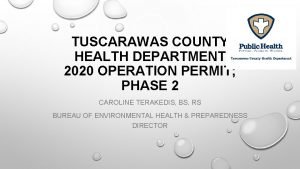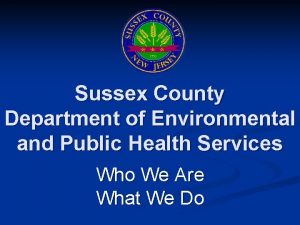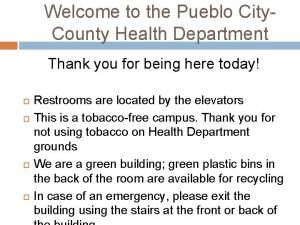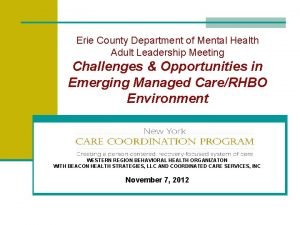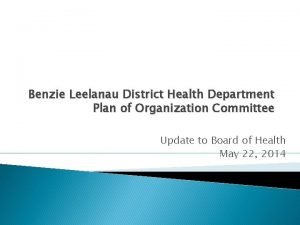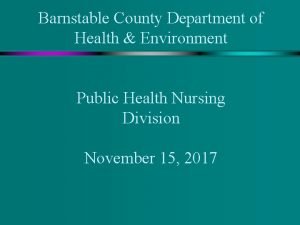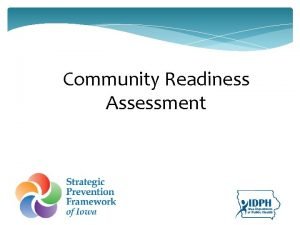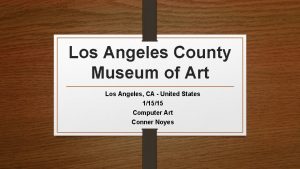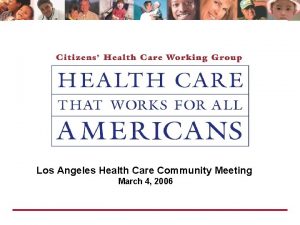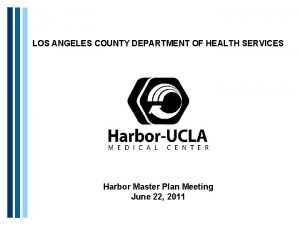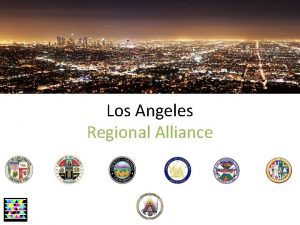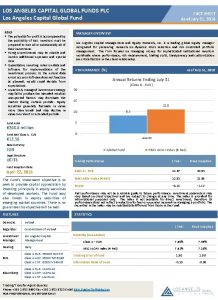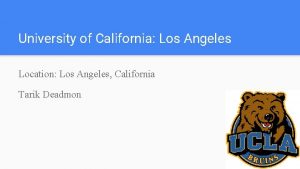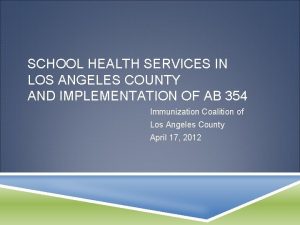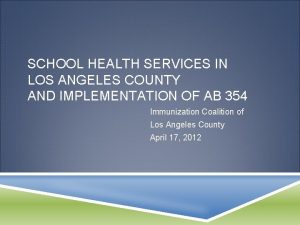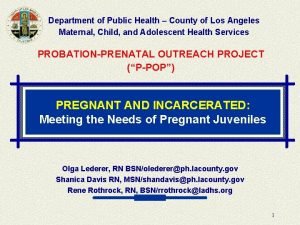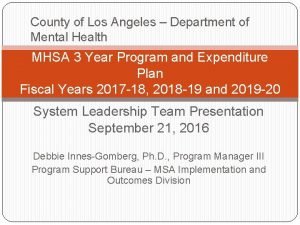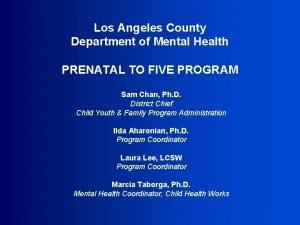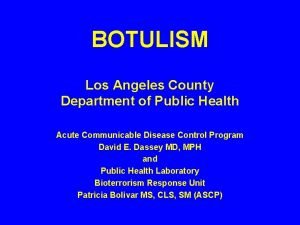Department of Health Services Los Angeles County Mitchell



















- Slides: 19

Department of Health Services Los Angeles County Mitchell Katz, M. D. mitchell. katz@nychhc. org

GOALS 1. Create 10, 000 units of housing 2. End chronic homelessness in LA County 3. Reduce inappropriate use of expensive health care resources 4. Improve health outcomes for vulnerable populations. 2

CLIENTS HOUSED § Housing for Health provides housing and supportive services to homeless clients with physical and/or behavioral health conditions, high utilizers of county services, and other vulnerable populations. 3

HFH CLIENT PROCESS CLIENT IDENTIFICATION by DHS facilities, County departments, CES, and other partners REVIEW/EVALUATE/ROUTE REFERRALS by HFH Administrative/Clinical Team INTERIM HOUSING RECUPERATIVE CARE STABILIZATION HOUSING PERMANENT HOUSING 4

Supportive Housing Quarterly and Program-to. Date Outcomes Total # of clients who have attained housing since HFH began in November 2012 3968 Total # of clients who are currently housed 3572 Total # of clients housed July—September 2017 379 5

HEALTH CONDITIONS OF CLIENTS HOUSED MOST COMMON CONDITIONS: § § § Depression Hepatitis C Asthma Substance Use Disorder Schizophrenia Anemia § § § Seizure Disorder Bipolar Disorder Cancer Neuropathy Schizoaffective Disorder HIV/AIDS Most HFH clients have MULTIPLE CHRONIC HEALTH CONDITIONS 6

GENDER OF CLIENTS HOUSED Gender of Clients Housed (N=3968) 63% Male (2518) Female (1366) 34% Info Not Reported (57) 1% Transgender M-F (26) 1% Transgender F-M (1) 0% 7

AGE OF CLIENTS HOUSED Age of Clients Housed (N=3968) 18 -29 (365) 9% 30 -39 (496) 13% 40 -49 (701) 18% 50 -59 (1356) 34% 60 -69 (834) 21% 70+ (163) Data Not Collected (53) 4% 1% 8

RACE OF CLIENTS HOUSED Race of Clients Housed (N=3968) 44% Black or African American (1762) 35% White (1390) Unknown (350) 9% Multi-Racial (310) 8% Asian (65) 2% American Indian or Alaska Native (71) 2% Native Hawaiian or Other Pacific Islander (20) 1% 9

ETHNICITY OF CLIENTS HOUSED Ethnicity of Clients Housed (N=3968) Non-Hispanic/Latino (2533) 64% Hispanic/Latino (1139) Unknown (296) 29% 7% 10

HEALTH INSURANCE OF CLIENTS HOUSED Health Insurance Type for Clients Housed (N=3968) 68% Medi-Cal (2701) Unknown (904) Medicare (106) 23% 3% Medi-Cal/Medicare (90) 2% No Insurance (93) 2% Private (26) 1% Other (48) 1% 11

INCOME SOURCES OF HOUSED CLIENTS Income of Clients Housed (N=3968*) During the client intake and assessment process, the Disability (1427) Intensive Case Management Services (ICMS) provider obtains information on the Other (1422) client’s income and health benefits. If the client appears to be eligible for a benefit they General Relief (1359) are not currently receiving, the ICMS provider will assist them Info Not Provided (474) to obtain any necessary documents and will complete and track applications for None (438) DPSS Services (Cal. Fresh, Medi -Cal, GR, Cal. WORKs, and IHSS) and SSI. Employment (390) 36% 34% 12% 11% 10% *Please note that clients can have more than once source of income. 12

TYPE OF HOUSING SUBSIDY Subsidy Type for Clients Housed (N=3968) 44% Flexible Housing Subsidy Pool (PSH) (1753) 15% Flexible Housing Subsidy Pool (RRH) (594) HACLA TBV (545) 14% S+C (448) 11% HACLA PBV (437) 11% HACo. LA (122) 3% Info Not Collected (42) 1% LAHSA (27) 1% 13

INTENSIVE CASE MANAGEMENT § Every client connected to services. § Individualized service planning and linkages to health, mental health, and substance use disorder services. § Help clients retain housing and reach health and wellbeing goals. § Services provided by on-site staff or mobile teams. 14

HOUSING STATUS AND RETENTION Homeless Status § The average length of time that clients experienced homelessness was 3 years and 6 months and the median length of time was 2 years. § The majority of HFH clients were chronically homeless (81%), which means they were homeless for more than one year or experienced four or more episodes of homelessness in the last three years. Housing retention rate § 97% of clients retained housing (remained in unit or exited to other permanent housing) after 12 months. Exits from housing this quarter § Fifty three (53) clients exited housing this quarter. Nine (9) passed away, twelve (12) voluntarily surrendered, five (5) moved into other independent living situations or moved in with family and friends, fifteen (15) left for an unknown reason, eight (8) were incarcerated, one (1) was evicted, three (3) moved to a higher level of care. 15

FLEXIBLE HOUSING SUBSIDY POOL

HFH EVALUATION BACKGROUND In 2017, RAND quantitatively analyzed and evaluated 890 Housing for Health clients*: § 83% met HUD’s definition of chronically homeless § 88% had a co-occurring medical and mental health or substance use condition § More than 96% were stably housed for at least one year *Published report will be available in December 2017. 17

KEY EVALUATION FINDINGS The average public service utilization cost per participant the year before housing totaled $38, 146. In the year after receiving housing and services, the total cost per participant totaled $15, 358. Taking PSH costs into account, this represents a 20% net cost savings to the county. 18

KEY EVALUATION FINDINGS 76% 67% 59% reduction in inpatient medical services in the year after housing placement reduction in emergency medical services in the year after housing placement reduction in crisis stabilization services in the year after housing placement 19
 Milwaukee health and human services
Milwaukee health and human services City of los angeles department of recreation and parks
City of los angeles department of recreation and parks Children and family services los angeles
Children and family services los angeles Las lenguas cesarán
Las lenguas cesarán What are the elements of a system of care
What are the elements of a system of care Deshaney v. winnebago county social services
Deshaney v. winnebago county social services Caldwell county social services
Caldwell county social services Albany county dept of social services
Albany county dept of social services Bidsync through miamidade county
Bidsync through miamidade county Delaware county department of human services
Delaware county department of human services Sotch orange
Sotch orange 204 e holly ave sewell nj 08080
204 e holly ave sewell nj 08080 Cowlitz county health department
Cowlitz county health department Tuscarawas county health department
Tuscarawas county health department Sussex county board of health
Sussex county board of health Pueblo city county health department
Pueblo city county health department Erie county department of mental health
Erie county department of mental health Benzie leelanau health department
Benzie leelanau health department Barnstable county department of health and environment
Barnstable county department of health and environment Iowa department of health and human services
Iowa department of health and human services
